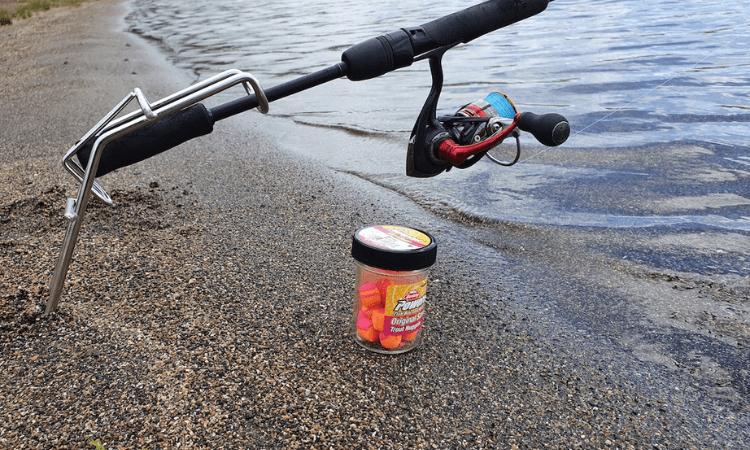Are you prepared to start on an exciting adventure that will take you all over the world to fish for trout? Having the appropriate equipment for trout fishing can make all the difference, regardless of whether you are an experienced angler or are just starting out. In this article, we’ll go over the fundamental components that make up a great trout fishing rig so you can get out there and catch more fish. Everything from picking out the proper rod and reel to deciding what kind of bait to use will be covered in this guide. Get ready to learn how to bring in the big fish and make fishing experiences that people will remember for a lifetime.
The Right Rod
Getting ready for a day of trout fishing starts with selecting the appropriate fishing pole. It’s similar to choosing the right tool for the task, which in this case is catching some outstanding trout: you want to make sure you use the right tackle. Take into consideration the following:
Rod Length and Action
There is a wide range of lengths and actions available for trout fishing rods. When fishing in smaller streams, rods with a length of about 6 to 7 feet are best, while rods with lengths of 8 to 10 feet work best when fishing in larger bodies of water. The flexibility and sensitivity of a rod are directly proportional to the action of the rod, which might be quick, medium, or slow. Rods with a fast action are better suited for casting over greater distances, whilst rods with a sluggish action are more accurate over shorter distances.
Material Matters
Graphite, fiberglass, or a combination of the two materials is typically used in the construction of rods used for trout fishing. Graphite rods are recognized for their sensitivity, which makes it easier to feel those minor nibbles. On the other hand, fiberglass rods are believed to be more robust and forgiving if you are still working on your casting technique.
Choose from the Reel
Your fishing rod is incomplete without its reliable sidekick, the fishing reel. Let’s go over some of the most important things to think about while selecting the best option:
Dimensions as well as Line Capacity
The capacity of a reel is often described with a number (for example, 1000, 2500, or 4000). When fishing with lighter lines and lures, smaller reels are ideal, whereas larger reels are better suited for fishing with heavier gear. Make sure the reel you choose has a capacity for enough line to meet your requirements for trout fishing.
System of Drag
It is crucial to have a drag mechanism that is both smooth and adaptive. It enables you to maintain control of the tension in the line even while a trout is struggling to break free. If you want to avoid snapped lines and lost catches, you should look for a reel that has a solid drag system.
The Ideal Course of Action
Another essential component of the equipment you will need to catch trout is the correct choice of fishing line. It’s similar to picking the appropriate thread while you’re sewing; the line serves as the connection between you and the fish.
Line Made of Monofilament
Because of their versatility, monofilament lines are an ideal option for fishing for trout. They have good knot strength, can be handled easily, and are quite affordable. When fishing for trout, choose lure weights that are between 4 and 8 pounds.
Line Made of Fluorocarbon
Because fluorocarbon lines are nearly undetectable below the surface of the water. They are a great option for use in environments with clear water. Additionally, they sink more quickly than monofilament, which can be an advantage when fishing at greater depths.
Line That Is Braided
When you need to throw over a significant distance. Braided lines are a fantastic alternative since they offer superior strength relative to their diameter. Keep in mind that trout can be line-shy, so if you decide to use a braided mainline. You might want to consider using a fluorocarbon leader instead.

Important Fishing Gear
Now that we’ve covered the basics of your fishing spot. Let’s talk about the fundamental fishing gear you’ll need to catch trout.
The Use of Lures and Baits
Because trout are known to have a wide variety of preferences in their diets. It is vital to have a variety of lures and baits. Having a choice of artificial lures and baits in your tackle box. Such as spinners and soft plastics, as well as natural baits, such as worms and power bait. They provide you with more options to choose from depending on the water and weather conditions.
Tackle Box and Its Accompanying Items
A quality tackle box will allow you to easily organize and reach all of your fishing gear. If you want to carefully handle your catch. You need to bring along certain gear like pliers, line clippers, and a fish gripper.
The final word
When it comes to fishing for trout. Having the appropriate setup is the most important factor in determining your level of success. Your angling endeavors depend heavily on the gear that you use. From the selection of the best line & tackle to the choice of the ideal rod & reel, and everything in between. Prepare yourself to reel in some trophy trout by putting on your gear. And traveling to your preferred trout fishing area, and getting ready to fish. When you have the correct gear, every fishing excursion has the potential to be an opportunity for life-changing experiences. It catches that will stick with you forever.
I hope you like the part where we talked about the Trout Fishing Setup. For more content like this visit our website 4 Boating Stuff

